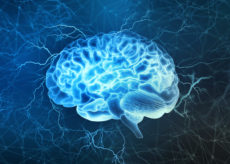3 Health Trends to Avoid in 2018 (and 3 you should try now)

Every year, it’s something different; new health trends and hyped-up food fads pop up—most long overstaying their welcome. While most are a waste of time and energy, some are truly helpful. We’re here to help you get started on the right foot in 2018 with this list of three health trends to avoid and three trends worth trying.
3 Health Trends to Avoid in 2018
1. Juicing and Detox Diets
Detox diets and juice cleanses vary dramatically in what you are and aren’t allowed to eat; in fact, research conducted by the Voice of Young Scientists found that no two companies even use the same definition for “detox.” Proponents of these “quick fixes” claim that their highly restrictive protocols can rid your body of toxins. However, few, if any, programs can name the supposed “toxins” targeted by its detox. Even more, while they’re quick to provide alluring (albeit unrealistic) promises, advocates of detox programs are notorious for providing little, if any, scientific evidence to back their outrageous claims.
The main results of juice cleanses and detox diets? You may feel weak, lack focus, perform worse, sleep poorly, and be highly irritable. While you might lose a few pounds, the weight that’s typically lost with such extreme dieting is fluid, electrolytes, healthy gut bacteria, and lean body mass. What’s more, heavily restrictive diets lead to a cascade of metabolic adjustments that leave you prone to overeating and gaining weight. Truth be told, these programs aren’t “fixing” anything; in fact, they are likely to be making things worse. Besides, the human body is already highly efficient at removing toxins with its inbuilt detox system—the lungs, liver, and kidneys—working every minute of every day. For more on this topic, please see our article The Dirty Truth about Detox Diets.
2. Being Afraid to Eat Before Bed
Contrary to popular belief, eating after a certain time at night does NOT magically make you gain weight. It’s a mystery why the myth pervades that people shouldn’t eat before bed. Sure, restricting food intake to a certain window of time can be an effective weight management tool (see section on Intermittent Fasting below); however, when food amounts and portion sizes are held constant, meal timing doesn’t make a big difference for most people most of the time.
While midnight snacking on junk food certainly isn’t great for you, if you make good food choices in appropriate amounts, it’s perfectly fine to eat before bed. In fact, a late-night snack consisting of food that keeps hunger at bay and stabilizes blood sugar can help you sleep better and stick to your nutrition plan. Good before-bed snacks focus on protein and healthy fats, such as cottage cheese with peanut butter, Greek yogurt with flaxseeds, hard-boiled eggs, or a protein shake (including slow-digesting proteins) with some nuts or nut butter.
3. “One Diet Fits All” Mentality
While there are a quite a few effective nutrition plans out there, research indicates that there is no universal “best” diet for weight management. Findings suggest that reduced-calorie diets result in meaningful weight loss regardless of which macronutrients they emphasize (e.g., low carb, low fat). You’ve probably experienced this yourself when you’ve compared results with friends who are following the same diet. There are a number of reasons why; simply put, everyone is different, and the perfect diet for you might be an individualized plan based on your personal biomarkers.
What does that mean for you? Experiment mindfully. In other words, don’t follow the herd just for the sake of it. Pay attention to how your body is responding to a program. What’s working? What’s not? How can you do more of the former? How can you do less of the latter? Hire a coach who can help keep you accountable and help you find what truly works.
3 Health Trends to Adopt in 2018
1. Intermittent Fasting
One way to reduce overall calorie intake without “dieting” is to incorporate intermittent fasting (IF). There are a few different IF protocols you can follow. For example, there’s the popular “time-restricted feeding” (e.g., 16/8 method) where you fast for an extended number of hours each day (e.g., 16) followed by unrestricted eating during the “feeding window” (e.g., 8 hours). There’s also “alternate day fasting” (ADF), which involves heavily restricted caloric intake (e.g., > 400 calories) or complete fasting for a prescribed number of days each week. An example is the 5:2 diet where you fast for two days a week and eat with no restrictions the other 5 days. There’s also the “fast-mimicking diet,” which is designed to mimic the benefits of prolonged fasting by heavily restricting caloric intake (about 40% of normal intake) for 5 consecutive days out of each month. Of course, intermittent fasting works best if, overall, the food you do eat is healthy and nutritious, and of course, you must be sure to stay hydrated on fasting days.
2. Non-Traditional Exercise
Fitness experts continue to research body dynamics and adapt new findings to exercise techniques for the maximum physical benefits. Here are two non-traditional exercise regimens that are proving to be excellent, all-around workouts.
High-Intensity Interval Training (HIT)
The basis of HIT is to perform quick, intense bursts of exercise followed by short, light, recovery periods. HIT is much more time-efficient than traditional aerobic exercise for improving cardiovascular fitness and health, insulin sensitivity, metabolic health, body composition, and more. What’s more, it’s quick and convenient, it doesn’t require equipment so you can do it anywhere, and it boosts your metabolism for long-lasting calorie burning. For more, check out our article When Is the “Best” Time to Work Out?
Bodyweight Training
For an exercise routine that’s simple but offers many benefits, consider bodyweight training. As the name suggests, you use the weight of your body to provide resistance, helping to improve strength as well as cardiovascular fitness. Bodyweight training doesn’t cost anything, and like HIT, you can do it anywhere. Also similar to HIT, it boosts your metabolism, increasing your daily calorie burn. In addition, it’s great for improving core strength, balance, and flexibility.
3. Taking Protein to Lose Weight
When it comes to improving overall health, performance, body composition, and appetite control, there is arguably not a single more effective, well-established dietary factor than increasing your protein intake. Research has shown that consuming diets higher in protein helps:
• Curb hunger, increase satiety, and improve appetite control.
• Boost metabolic rate.
• Accelerate fat loss.
• Prevent weight regain.
• Promote long-term weight maintenance.
• Help build calorie-burning muscle mass.
• Preserve metabolic rate after weight loss.
Pretty cool, right? Since your body doesn’t store protein, you must consume it regularly. The type of protein you eat is also important. There are many concerns with protein quality, additives, hormones, antibiotics, inflammatory fats, heavy metals, and more with typical protein sources.
Overall, high-quality lean meats, poultry, seafood, wild game, eggs, and dairy (preferably grass-fed, pasture-raised, organic, wild, etc., when appropriate) are great options, while legumes, nuts, and seeds are good sources for plant-based eaters. Perhaps the easiest way to get more protein is by using a high-quality, grass-fed, hormone-free protein powder that comes from healthy, happy, humanely treated cows.
Bring in the new year by embracing positive health habits and avoiding useless fads. By heeding these tips, you can improve your health and well-being—not waste time, energy, and resources chasing the latest too-good-to-be-true health gimmicks.






